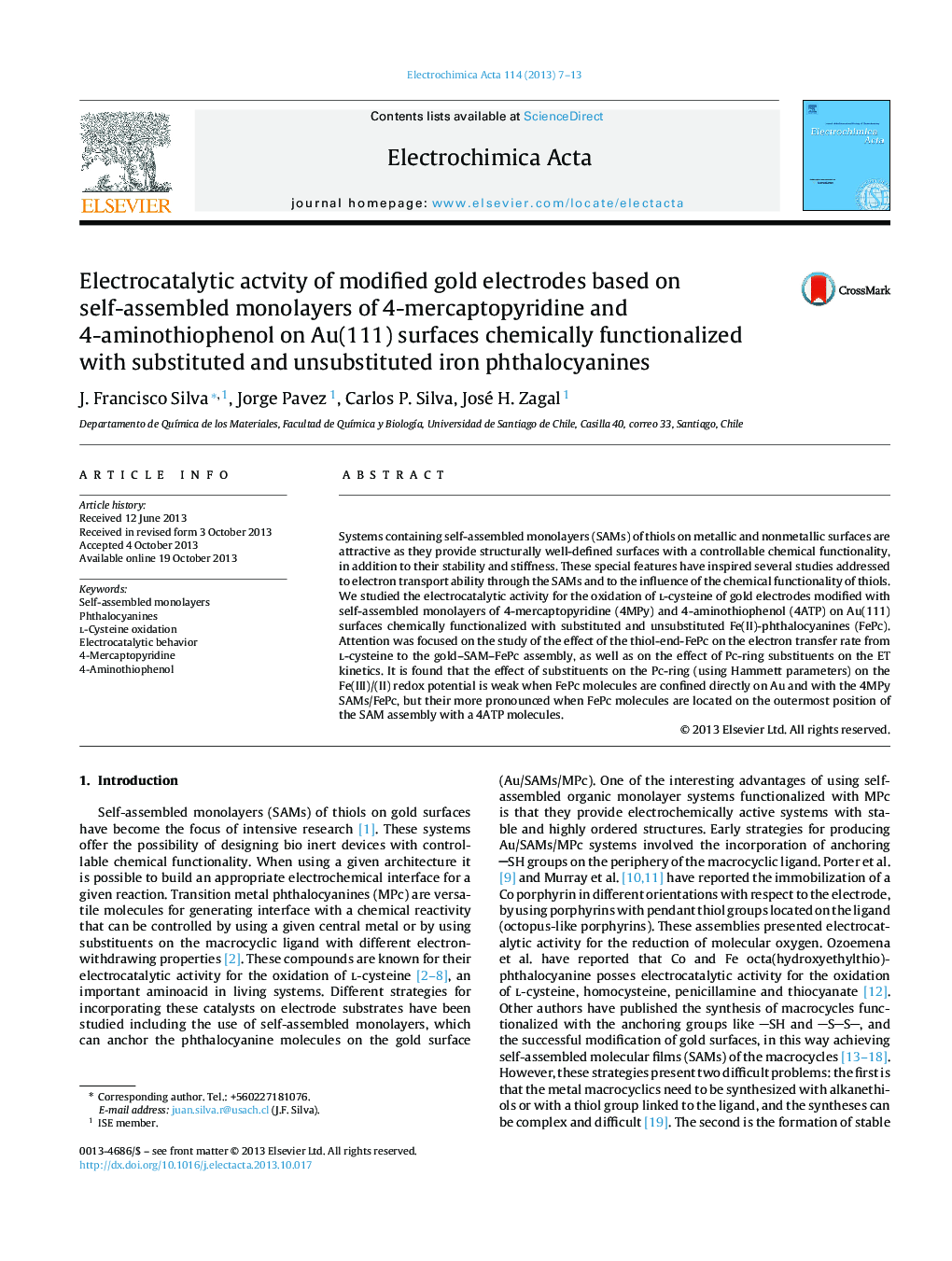| Article ID | Journal | Published Year | Pages | File Type |
|---|---|---|---|---|
| 186426 | Electrochimica Acta | 2013 | 7 Pages |
Systems containing self-assembled monolayers (SAMs) of thiols on metallic and nonmetallic surfaces are attractive as they provide structurally well-defined surfaces with a controllable chemical functionality, in addition to their stability and stiffness. These special features have inspired several studies addressed to electron transport ability through the SAMs and to the influence of the chemical functionality of thiols. We studied the electrocatalytic activity for the oxidation of l-cysteine of gold electrodes modified with self-assembled monolayers of 4-mercaptopyridine (4MPy) and 4-aminothiophenol (4ATP) on Au(111) surfaces chemically functionalized with substituted and unsubstituted Fe(II)-phthalocyanines (FePc). Attention was focused on the study of the effect of the thiol-end-FePc on the electron transfer rate from l-cysteine to the gold–SAM–FePc assembly, as well as on the effect of Pc-ring substituents on the ET kinetics. It is found that the effect of substituents on the Pc-ring (using Hammett parameters) on the Fe(III)/(II) redox potential is weak when FePc molecules are confined directly on Au and with the 4MPy SAMs/FePc, but their more pronounced when FePc molecules are located on the outermost position of the SAM assembly with a 4ATP molecules.
